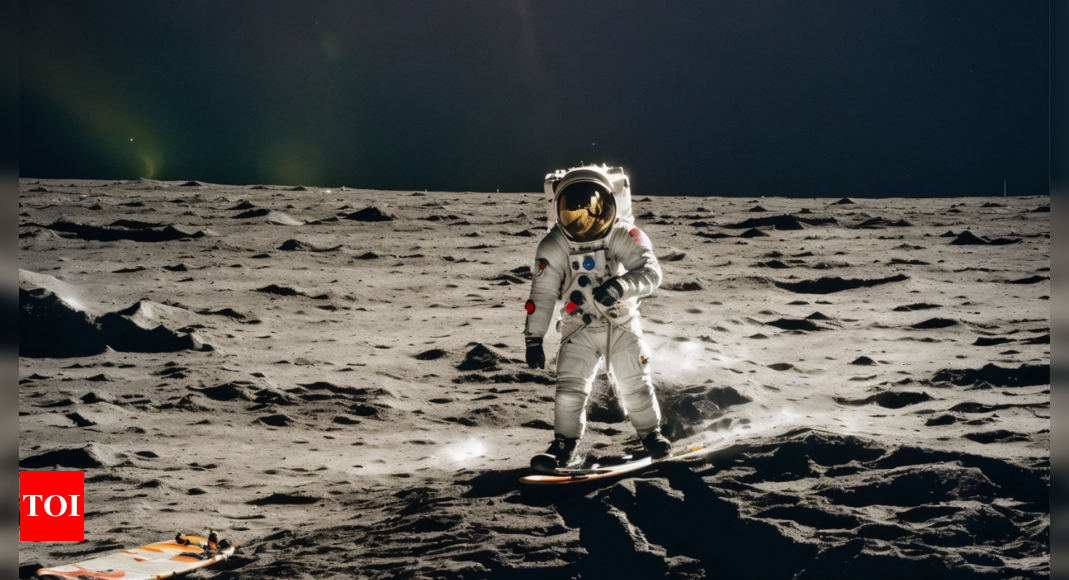Moon express: How US plans to develop 'lunar railroad' to transport humans, supplies - Times of India

Source: The Times of India
Author: Toi Science Desk
NEW DELHI: In an ambitious step toward outer space colonization, the US Defense Advanced Research Projects Agency (DARPA) has shown interest in a revolutionary concept: establishing a rail system on the moon. This idea, reminiscent of the rail expansion that transformed the American West in the late 19th century, aims to spearhead a new era of economic development beyond Earth.
According to a report in Space.com, aerospace leader Northrop Grumman has stepped forward with a proposal for this "lunar railroad," a concept that promises to facilitate the transport of humans, supplies, and resources across the lunar surface.This initiative could serve as the backbone for commercial ventures and a burgeoning space economy involving the United States and its international allies. As part of DARPA's LunA-10 project, Northrop Grumman, alongside 13 other selected companies including SpaceX and Jeff Bezos' Blue Origin, is set to explore the feasibility and logistics of this grand vision.
DARPA's LunA-10 Capability Study is not just another moonshot. Launched in December as a part of a 10-year vision, it seeks to extend humanity's economic reach into the vastness of deep space. Michael Nayak, program manager at DARPA's Strategic Technology Office, emphasizes the imminent paradigm shift in lunar economic activities. By fostering innovative solutions like a multi-purpose wireless power station, the initiative aims to fast-track the development of technologies critical for sustained lunar presence and commercial exploitation.
The financial framework for these pioneering studies remains under wraps, with DARPA hinting at an "Other Transaction award" ceiling of $1 million. The outcomes of these studies will be unveiled at the upcoming Lunar Surface Innovation Consortium Spring Meeting, setting the stage for a mid-year report release that could herald a new chapter in lunar, and potentially interplanetary, colonization, the report said.
Challenges of building infrastructure on the Moon
Building infrastructure on the moon presents a set of unique and formidable challenges due to its harsh environment and the current limitations of space technology. Here are some of the main obstacles:
Harsh lunar environment: The moon's surface is extremely hostile, with vast temperature fluctuations, a near vacuum atmosphere, and frequent meteorite impacts. The lack of an atmosphere means there is no protection from harmful solar radiation and cosmic rays, which can damage materials and electronic equipment.
Lack of atmosphere: The absence of an atmosphere on the moon also means that sound cannot travel, and there is no air to breathe, requiring all life support and communication systems to be self-contained and highly reliable.
Microgravity conditions: The moon's gravity is only one-sixth that of Earth's, affecting everything from human physiology to the behavior of materials and fluids. This makes construction techniques and material handling very different from those on Earth.
Regolith and dust: Lunar soil, known as regolith, is fine, abrasive, and pervasive. It can damage equipment, impede mechanical functions, and pose health risks to astronauts. Managing and mitigating lunar dust during construction activities is a significant challenge.
Resource scarcity: The moon lacks readily available water, air, and living materials. All construction materials, tools, and life support systems must be transported from Earth or developed from lunar resources, both options presenting significant logistical and economic challenges.
Energy supply: Without an atmosphere for insulation, surface temperatures vary dramatically, making energy supply a critical concern. Solar power is an option, but the long lunar night (about 14 Earth days) necessitates the storage of power or the development of alternative energy sources.
Remote operation and automation: Given the communication delay and the risk to human life, much of the lunar construction may need to be done remotely or autonomously. Developing reliable, autonomous construction technology is complex and untested in lunar conditions.
Transportation and landing: Launching materials from Earth is expensive, and landing on the lunar surface requires precise control to avoid damaging equipment or future infrastructure.
Legal and international regulations: The Outer Space Treaty and other agreements complicate the ownership and use of lunar resources, potentially hindering construction and development efforts.
Psychological and social challenges: Long-duration lunar missions will pose psychological and social challenges for crews, affecting their ability to construct and maintain infrastructure.
The TOI Science Desk stands as an inquisitive team of journalists, ceaselessly delving into the realms of discovery to curate a captivating collection of news, features, and articles from the vast and ever-evolving world of science for the readers of The Times of India. Consider us your scientific companion, delivering a daily dose of wonder and enlightenment. Whether it's the intricacies of genetic engineering, the marvels of space exploration, or the latest in artificial intelligence, the TOI Science Desk ensures you stay connected to the pulse of the scientific world. At the TOI Science Desk, we are not just reporters; we are storytellers of scientific narratives. We are committed to demystifying the intricacies of science, making it accessible and engaging for readers of all backgrounds. Join us as we craft knowledge with precision and passion, bringing you on a journey where the mysteries of the universe unfold with every word.
